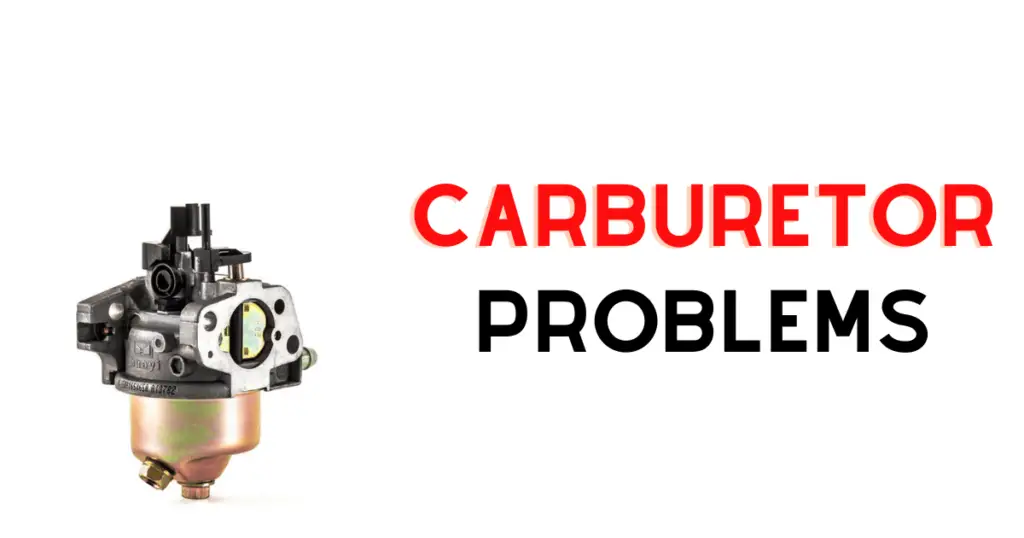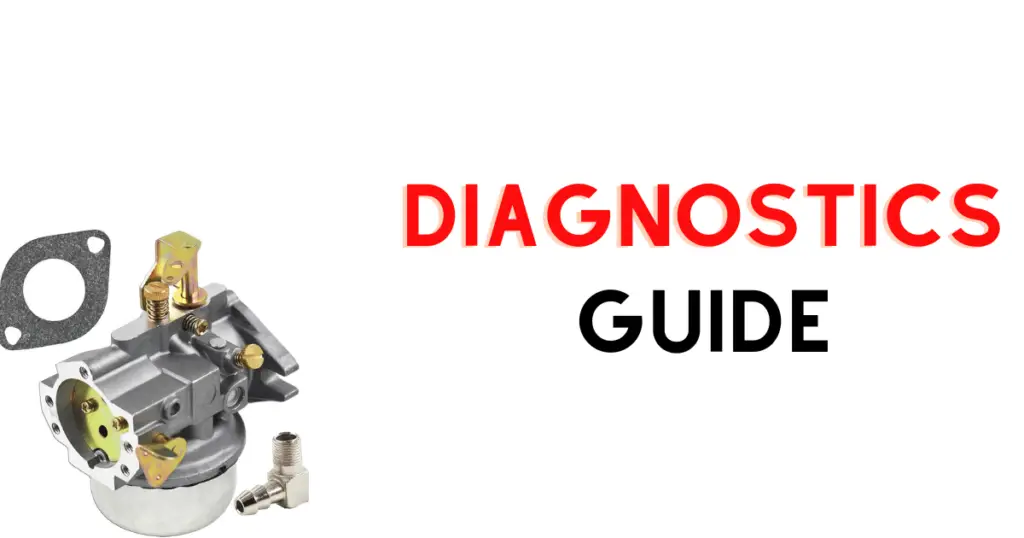Cub Cadet machines are known for their reliability and durability in garden and lawn maintenance. However, like any piece of machinery, they can experience issues that affect performance. One common area of trouble is the carburetor, an essential component of the engine that manages the air and fuel mixture for combustion. Improper care or neglect of the carburetor can lead to starting difficulties or stalling, symptoms often associated with fuel delivery problems.
To maintain the Cub Cadet’s engine at peak performance, understanding carburetor-related issues is crucial. Problems may arise from a variety of sources, such as old fuel that has lost its volatility or accumulated debris and residue within the carburetor’s chambers. Addressing these issues typically involves a process of cleaning or, if necessary, replacing the carburetor to restore the engine’s smooth operation. Regular maintenance and troubleshooting of carburetor problems are key to ensuring that the Cub Cadet operates efficiently and effectively.
Related problem:
– Cub Cadet Hydrostatic Transmission Problems (Complete Guide)
– Cub Cadet Steering Problems: Causes and Solutions
How To Identify Common Cub Cadet Carburetor Problems

When a Cub Cadet lawnmower exhibits difficulties starting, or performance issues during operation, the carburetor is often at fault. Understanding the symptoms and their causes can be key to diagnosing and resolving the issue efficiently.
Engine Starting Difficulties
Cub Cadet Not Starting: If a Cub Cadet mower fails to start, the carburetor could be the culprit. Clogging in the carburetor may prevent fuel from reaching the combustion cylinder. Checking for a blocked fuel passageway and ensuring there is fuel present on the spark plug can help determine if the carburetor is obstructed.
- Sputtering or Backfires: When starting or in use, a Cub Cadet might Sputter or backfire, indicating irregular fuel flow. One should inspect for a consistent stream of fuel and absence of blockages.
- Black Smoke: An evident sign of a carburetor issue is black smoke from the exhaust, signaling an overly rich fuel mixture.
Performance Issues During Use
Cub Cadet Starts Then Dies: A common symptom of carburetor problems is when the engine starts but then stops running shortly after. This could be due to fuel supply interruptions or improper air-to-fuel ratio.
- Engine Performance: Proper carburetion ensures smooth engine performance. If the mower is displaying running problems such as Power loss or uneven running, it might signify restricted air or fuel due to a dirty carburetor.
- Carburetor Cleaning: Regular maintenance, including cleaning and inspecting the carburetor, can often correct these performance issues.
Boldly identifying and addressing these common carburetor problems ensures the Cub Cadet operates at its full potential.
How Can You Best Perform Routine Carburetor Maintenance?
Routine maintenance of a Cub Cadet carburetor ensures optimal engine performance and fuel efficiency. This maintenance includes regular cleaning and adjustments to prevent running problems and increased fuel consumption.
Cleaning the Carburetor
The first step in maintaining a Cub Cadet carburetor is to clean it properly. They recommend disassembling the carburetor to access all parts that require cleaning. Cleaning should be done with a quality carburetor cleaner and compressed air to remove any clogs and debris.
- Tools Needed: Screwdriver, pliers, carburetor cleaner, compressed air.
- Air Filter: Check and clean the air filter or replace it if necessary.
- Fuel Filter: Inspect and change the fuel filter as part of regular maintenance.
- Process Overview:
- Remove the carburetor from the engine.
- Disassemble the carburetor carefully, keeping track of all parts.
- Clean all non-electrical parts with carburetor cleaner.
- Blow through passages with compressed air.
- Reassemble the carburetor using the photos taken as a reference.
Adjusting the Carburetor Settings
After cleaning, the carburetor may need adjustment to ensure it delivers the right fuel mix to the engine. Adjusting the carburetor settings involves turning the adjustment screws to achieve the proper idle and mixture.
- Idle Speed Adjustment: Adjust the idle speed screw until the engine runs smoothly at idle.
- Mixture Adjustment: Fine-tune the mixture screws to ensure the right balance of air and fuel.
- Testing: Start the engine to test the adjustments, and re-adjust if necessary for optimal engine performance.
Note: It is advisable to use a fuel stabilizer additive in the fuel to minimize carburetor problems caused by stale fuel. Regular maintenance, including the use of fuel additives, will prolong the life of the carburetor and help avoid the necessity of frequent disassembly and cleaning.
How To Troubleshoot Fuel System Components on A Cub Cadet

In addressing issues with the Cub Cadet’s fuel system, thorough inspection of fuel lines and the fuel pump and filter is critical. Ensuring that the fuel supply is reaching the engine without obstruction supports optimal mower performance.
Inspecting the Fuel Lines
To begin, visually inspect all fuel lines for damage, wear, or kinks which could restrict fuel flow. Ensuring the fuel shut-off valve is in the on position is also essential. If there is evidence of deterioration or obstruction, replacing the compromised fuel line is necessary to maintain a steady fuel supply from the fuel tank to the carburetor.
Examining the Fuel Pump and Filter
Next, evaluate the fuel pump and fuel filter. A bad fuel pump can compromise fuel flow, making it unable to deliver fuel from the tank to the engine. Testing the pump’s operation often requires manual inspection or a pressure test. The fuel filter should be clear of debris; a plugged fuel filter does not allow adequate fuel to pass through. If the filter is dirty or clogged, it must be replaced to ensure full fuel flow to the engine.
How To Address Ethanol-Related Issues
Ethanol in fuel can lead to the formation of gummy deposits and moisture build-up in carburetors, especially when left to sit over time. This can result in engine starting issues and poor performance. Understanding the impact of ethanol and taking preventive steps are essential for maintaining Cub Cadet carburetors.
Ethanol Impact on Carburetor
Ethanol, commonly found in modern fuel blends, absorbs moisture from the air, which can accumulate in the carburetor. This moisture can lead to the formation of gummy deposits that clog the small passages within the carburetor, disrupting the fuel mixture. Over time, old fuel that contains ethanol can degrade and separate, exacerbating these issues. The presence of ethanol increases the risk of these problems occurring, particularly in engines that are not used frequently.
Preventive Measures for Ethanol Damage
Cub Cadet owners can take specific measures to prevent ethanol-related damage to their engine’s carburetors:
- Buy Fresh Fuel: Use fuel that is no more than 30 days old to minimize the chance of ethanol separation and moisture build-up.
- Stabilize the Fuel: Additives, like Sea Foam Motor Treatment, can stabilize the fuel mixture, protecting against ethanol-induced moisture accumulation.
- Regular Carburetor Maintenance: Performing regular carburetor cleaning can prevent the build-up of deposits. It’s recommended to clean the carburetor periodically and check for any signs of blockage.
- Replace Fuel Regularly: If the equipment will not be used for an extended period, it’s advisable to empty the fuel tank and run the carburetor dry, or use a fuel preservative to extend the life of the gas in the tank.
By understanding the effects of ethanol on carburetors and taking proactive measures, Cub Cadet owners can maintain the performance and reliability of their lawn equipment.
How To Replace Damaged Carburetor Parts (and When)
In maintaining the efficiency of a Cub Cadet mower, one must properly address carburetor issues by replacing damaged components. Specific parts such as throttle cables, choke cables, the float bowl, springs, and the filter housing, are all susceptible to wear and may need replacement to prevent leaking and ensure optimal function.
Identifying Worn Out Components
One should carefully inspect the carburetor to ascertain which parts are worn or damaged. Signs of a faulty throttle cable include sticking or unresponsive acceleration. A damaged choke cable may prevent the engine from starting or running smoothly. Observing the float bowl for cracks or damage is crucial as it can lead to fuel leakage. Similarly, inspection of springs and the filter housing is necessary to ensure they are not bent, corroded, or obstructed, which can impede their function.
Completing the Replacement Process
To replace carburetor parts on a Cub Cadet, one should follow these steps:
- Disassembly:
- Disable the mower’s ignition system to ensure safety.
- Remove the filter housing to access the carburetor.
- Detach the damaged throttle or choke cables.
- Installation of New Components:
- Install the new cables, ensuring they are correctly routed and secured.
- Replace the float bowl if it’s leaking, ensuring the new bowl is sealed properly.
- Install new springs with care to maintain proper tension.
- Verification:
- Once replaced, check all connections for security and proper placement.
- Test the functionality of the choke and throttle to confirm smooth operation.
By following these steps, one can effectively replace damaged carburetor parts on a Cub Cadet mower, thereby restoring its performance and reliability.
Advanced Carburetor Repair Techniques To Know About
In addressing carburetor issues with Cub Cadet lawn mowers, it is crucial to approach repair techniques methodically. Expertise in disassembly, inspection, rebuilding, and replacing carburetors ensures that fuel leakage is rectified and the mower runs optimally.
Disassembly and Inspection
To begin, one needs an array of tools including pliers, a screwdriver, and a socket/ratchet set. During disassembly, fuel should be drained to avoid leakage. Thick wire can be helpful in clearing passageways. Each component should be carefully removed and inspected for signs of wear or damage. It’s essential to use a consistent system for organizing parts such as taking photos or using containers to ensure smooth reassembly.
Rebuilding or Replacing the Carburetor
After inspection, a decision must be made whether parts can be cleaned and reused, or if they should be replaced. A rebuild kit may include new gaskets, O-rings, jets, and needles vital for a thorough overhaul. For more severe issues, replacing the carburetor may be the most feasible option. Whether rebuilding or replacing, each step must be tested to confirm the integrity of the repair. It may be advisable for those less experienced to seek professional guidance from a repair shop to avoid costly mistakes.
Frequently Asked Questions
In this section, we provide answers to common inquiries regarding Cub Cadet carburetor issues, offering straightforward guidance for troubleshooting and maintenance.